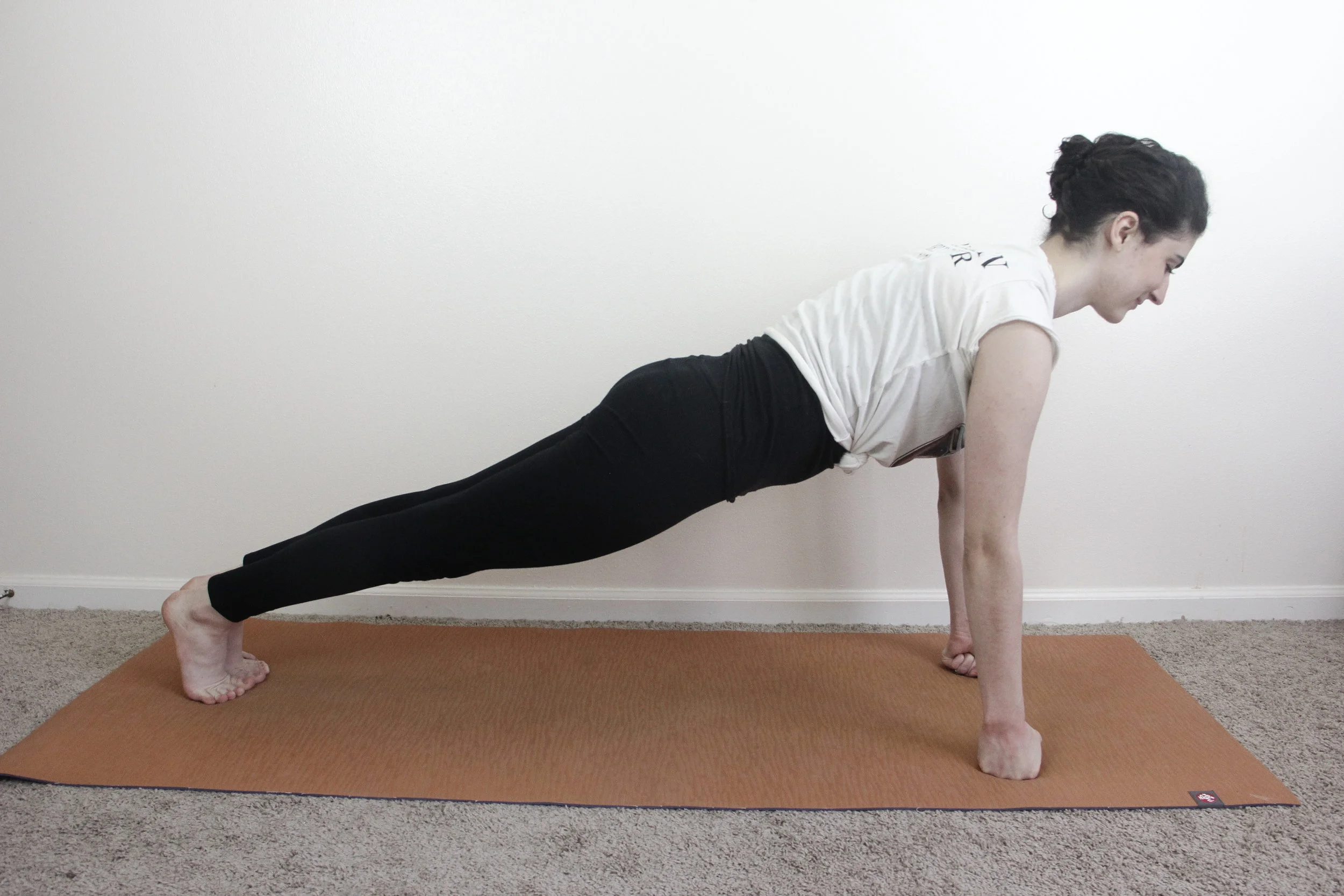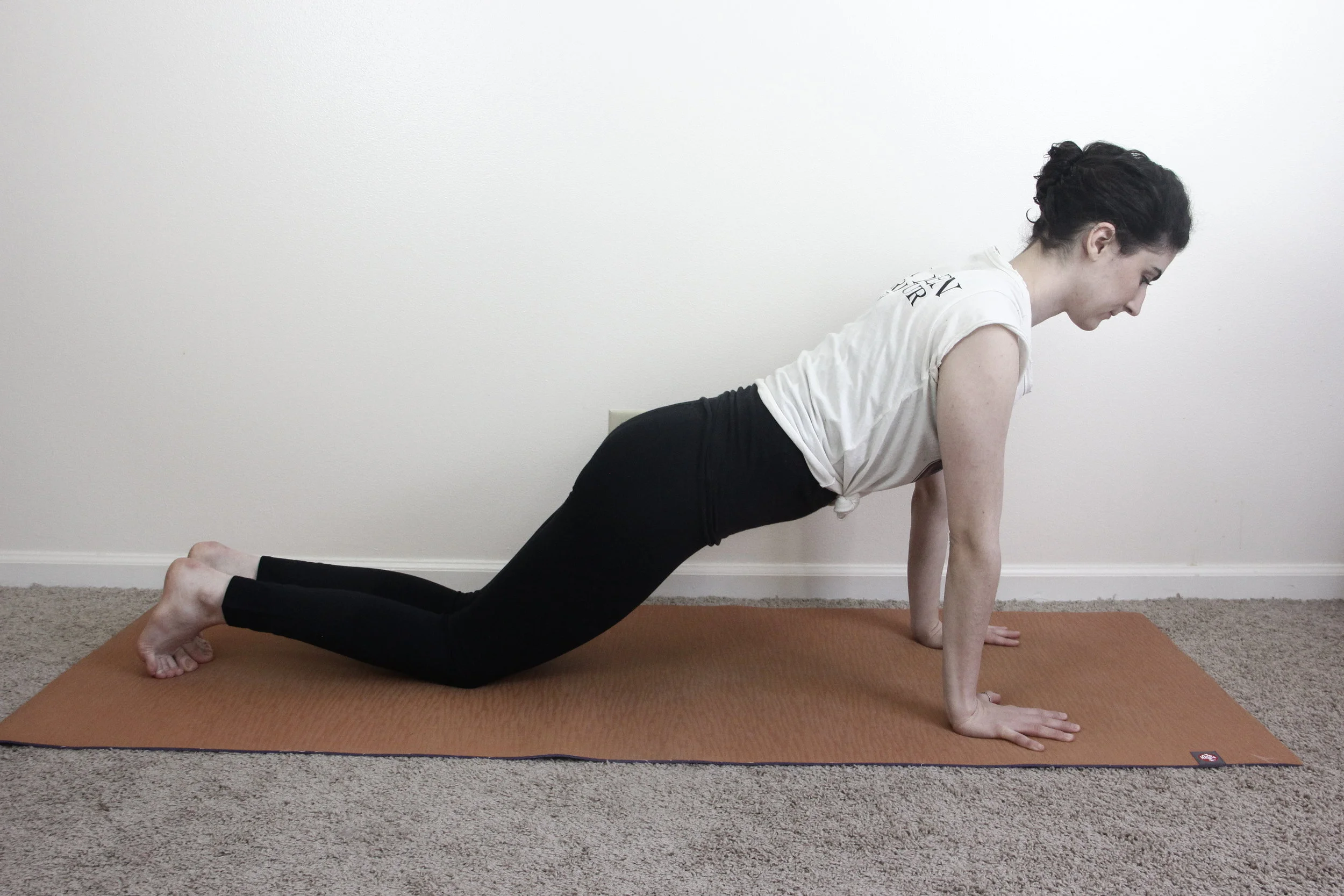UTTIHITA CHATURANGA DANDASANA: PLANK POS
Plank pose can be a very physically demanding pose, one that we may be tempted to avoid if we have chronic pain or chronic illness symptoms. But there are ways we can modify it to make it more comfortable and less demanding, so that we can find the version of the pose that challenges us without completely exhausting ourselves. We don't want to miss out on the benefits of this pose! If you have sensitive wrists, these modifications will help you too.
TRADITIONAL VARIATION
For the traditional expression of this pose, we'll start in table top pose. This way we can set up the arms first and then bring in the legs. The shoulders should be stacked directly over your wrists. Externally rotate the shoulders so that the inside creases of the elbows are facing the front of the mat. Keep a micro-bend in the elbows to prevent locking or hyperextension. Press firmly into all ten fingertips. Lengthen the tailbone and engage the core muscles. Finally, extend the legs back, coming onto the toes. Hold for as long as possible. 5-10 breaths is a great goal to start with. When you are finished, take rest in child's pose so your body can recuperate.
MODIFICATION #1: PLANK POSE ON FISTS
Instead of practicing plank pose with the hands flat, make fists and come onto the knuckles. Otherwise, your alignment will be the same. Practicing this way keeps the wrists straight and may help relieve wrist pain.
MODIFICATION #2: FOREARM PLANK
This variation may also help those with sensitive wrists, but it can be more demanding on the shoulders. Begin in tabletop pose, then come down onto the forearms with the shoulders aligned over the elbows. Elbows are bent at a 90 degree angle. Lengthen the tailbone, engage the core muscles. When you are ready, extend the legs behind you and come onto the toes.
MODIFICATION #3: HALF PLANK
Again, you'll start in tabletop pose with the knees together. Walk the hands forward slightly, then drop the hips to engage the core muscles. The toes can be pointed or you can come onto the toes, whichever feels more comfortable.
MODIFICATION #4: PLANK AT THE WALL
This variation places significantly less weight on the arms and hands. Face the wall and place the palms against the wall shoulder width apart and at shoulder height. Walk the feet back a bit and come onto the toes so that you're leaning into the wall. This will help you to build strength.





